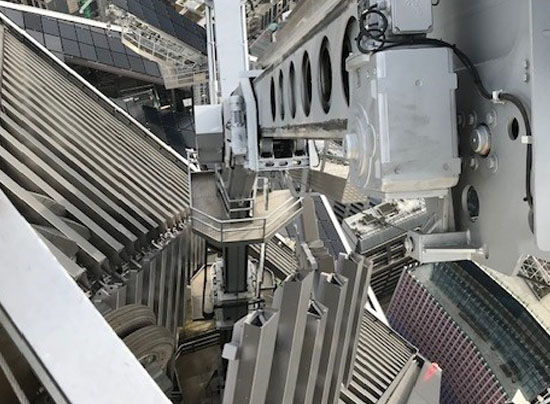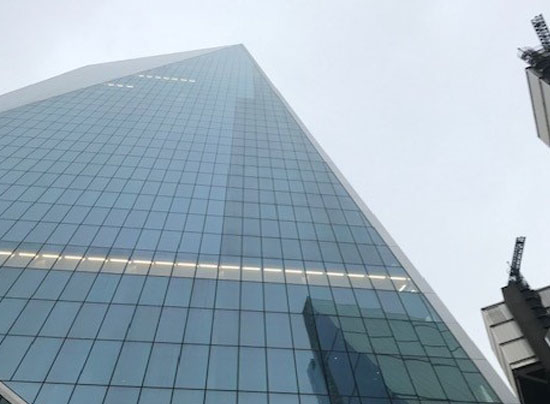52 Lime Street


52 Lime Street is a commercial skyscraper located in the heart of the financial district of London, UK. It is also known as “The Scalpel” due to its unique shape, which resembles a surgical instrument. The building was designed by Kohn Pedersen Fox Associates (KPF) and constructed by Skanska, one of the world’s leading construction companies. However, the most fascinating aspect of the building is the innovative curtain wall system developed by Scheldebouw, a Dutch façade engineering company.
WR Berkeley is a UK-based construction company that specializes in the construction of commercial and residential buildings. The company has a long history dating back to 1799 and has been involved in many prestigious construction projects over the years.
The construction of 52 Lime Street was a complex project that required extensive planning and collaboration between Skanska and WR Berkeley. The building features a distinctive angular shape that required precise engineering and construction techniques. The exterior of the building is clad in glass and stainless steel, giving it a modern and sleek appearance.
One of the key challenges of the project was the limited space available on the construction site. The building is situated in a busy area of London, surrounded by other buildings and narrow streets. Skanska and WR Berkeley had to carefully manage the logistics of the construction process to ensure that it did not disrupt the surrounding area.
Another challenge of the project was ensuring that the building was energy efficient and sustainable. Skanska and WR Berkeley worked together to implement several sustainability measures, including the use of renewable energy sources and the incorporation of green spaces into the building’s design.
Overall, the collaboration between Skanska and WR Berkeley on the construction of 52 Lime Street was a great success. The building is a testament to the companies’ commitment to excellence, innovation, and sustainability. It has become a landmark in the City of London and is a shining example of what can be achieved through collaboration and teamwork in the construction industry.
The inclined design of 52 Lime Street serves both aesthetic and functional purposes.
Scheldebouw was tasked with designing and constructing the building’s façade, which needed to be both visually striking and highly functional. The curtain wall system designed by Scheldebouw was a unique blend of aesthetics and functionality.
It features a double-skin façade with an innovative glazing system that allows for optimal daylighting and temperature control. The glazing system consists of a combination of single and double-glazed panels that help to reduce solar heat gain and minimize energy consumption. One of the key challenges faced by Scheldebouw was the building’s unusual shape. The building tapers from a wide base to a narrow top, which meant that each floor required a unique façade design. To overcome this challenge, Scheldebouw utilised a modular design that allowed for the efficient and precise manufacturing of each panel.
The company also used advanced 3D modeling software to ensure that each panel fit perfectly into the building’s unique shape.
The construction of 52 Lime Street was completed in 2020, and the building has quickly become one of the most recognizable landmarks in the City of London. Its distinctive design has won numerous awards and accolades, including the Emporis Skyscraper Award, which recognizes excellence in skyscraper design and construction.
Beyond its striking façade, 52 Lime Street is also notable for its sustainable features. The building has achieved a BREEAM Excellent rating, which recognizes best practices in sustainable building design and operation.
Cladtech Associates were appointed to provide a façade consultancy role within the client monitoring team. Our scope was to provide technical input in relation to the design of the facades, witness laboratory testing of the performance mock-ups; review materials and carry out factory audits of unitised elements in production and examine the installation and site testing of the façade during the construction phase.
Key challenges that emerged during the production process were maintaining a consistent glass appearance and quality given the volume and quantity of glass involved. Oversized sealed glass units at ground floor presented a considerable manufacturing and installation challenge.
In conclusion, 52 Lime Street’s inclined design is a bold and innovative statement in the heart of London’s financial district. Its unique shape not only enhances its aesthetic appeal but also maximizes its available floor space, making it a desirable location for high-end office spaces. Additionally, the building’s commitment to sustainability further cements its status as a model for modern urban design.



